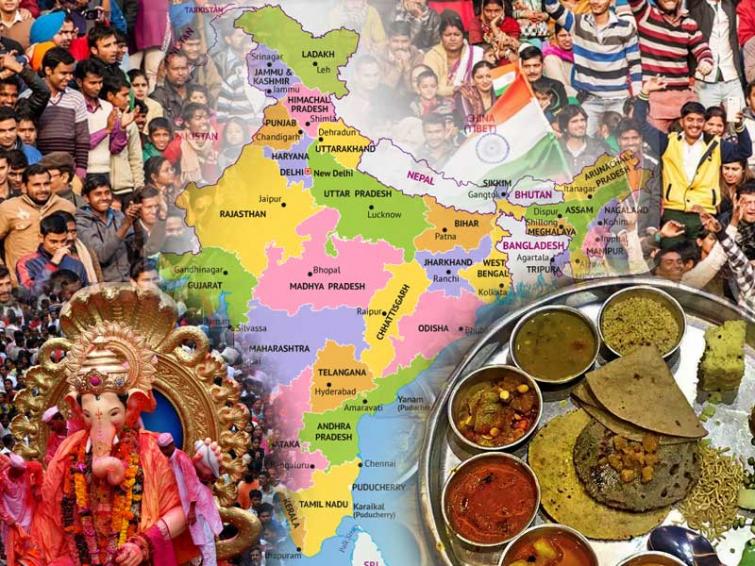
6 things about India only an Indophile would know
An Indophile is someone who loves India. Its culture, its people, its languages, its natural beauty and India’s amazing cuisine. Scottish Historian like William Darlymple or the musician Jerry Garcia are well-known examples of Indophiles who breathe India.
India in its diverse and pluralistic culture has long fascinated artists, curators, historians and archaeologists alike. But here are a few things about India that only an Indophile would know:
1. Languages spoken
With 29 states and 9 union territories it doesn’t come as a surprise that India has 23 languages recognized officially. However, 6% of the world’s languages are spoken in India.
According to a 2011 census, India has nearly 19569 languages and dialects. Of these, 1369 are counted as dialects and only 121 are languages. The acceptance factor for a dialect to be considered as a language is that it should have more than 10,000 speakers.
Is your mind boggled already? And some of these languages don’t have a written form.
2. A haven for vegetarian delights
India is home to the largest number of vegetarians in the world. With a majority of the population following Hinduism, India has the most delectable cuisine where vegetarian favorites like roti, naan, paneer tikka masala, chana masala, dosa, idli, malaikofta, aloo-gobhi and samosas have originated.
However, what most people don’t know is that India’s cuisine is as diverse as its languages and culture. As the food habits, spices used and staples vary within each region.
From the wheat-loving and rich, buttery dishes of Punjabi to the predominantly rice-based meals of Southern and Eastern parts, the sheer variety of foods across the country is astounding.
But all Indians (except the South where filter coffee rules the roost) unite in their love of chai, also known as çhai-tea in other parts of the world. The finest varieties of tea are grown in Darjeeling and Assam and typically prepared as masala chai by brewing the tea leaves in hot water and infusing it with spices like cardamom, cloves, ginger, mint etc. However, Indian tea is both milky and sweet.
3. People of India
India is one of the world’s oldest civilizations and the culture is a melting pot because of the large number of invasions in the country. Throughout its history the culture is influenced highly by Dharmic religions.
It has a diverse population that includes Hindus, Muslims, Sikhs, Parsis, Jains, Buddhists, Bahais and many more. Further, there are several ethnicities in India. It has the second largest population in the world with around 1.2 billion people.
In fact, India’s kumbhmela is the world’s largest human gathering. So much so that, this massive religious gathering can be seen from space.
4. Travel and tourism in the country
Not only is it culturally and ethnically diverse, even the geographical terrain varies greatly from the North to the South and the East to the West.
From the beautiful Taj Mahal in Agra which was in the original seven wonders of the world, to the pink city Jaipur replete with history and architecture, to the lush backwaters of Kerala (also known as God’s own country), to the party hub of India - Goa one of the most visited by foreign nationals, there are endless wonders and destinations in the country.
But did you know that India boasts of the highest motorable road in the world? The Khardung La or Khardung Pass in Ladakh was the world's highest motorable road at nearly 17,600 ft until recently. But now the distinction goes to an 86 km road constructed in the same area by the Border Roads Organization, towards Umlingta Top.
5. Things to do in India
If you are travelling to India then your options are endless. You cannot in all honesty, do justice to a round trip in a few days or months. There is plenty you can do here. You can be an adventure junkie and enjoy adventure sports at the many beachside resorts in India or travel through the many luxury trains to explore the most well-known tour. Alternatively, hit the casinos at Goa or take a luxury cruise from Mumbai to Goa.
Indians are quite fond of gambling and love card games. If you too enjoy gambling but don’t have the time to visit a casino, fret not. The casino comes to you with online with sites such as NetBet.
Online casinos are quite the rage among the gambling community owing to the large number of game options available and the increased odds of winning.
6. Contribution to Mathematics
Indian Mathematics has played a big role in the history of Math. The decimal system that is popularly used today was first recorded in India. Some of the biggest contributions include the concept of zero as a number, the use of negative numbers, arithmetic, algebra and trigonometry.
Later these math concepts were transferred to the Middle East, China and finally Europe. An early strand of calculus also originated in the Kerala school.
Truly Incredible
India is multi-faceted and truly amazing. Just when you think you have understood the country and its people, it will unravel new aspects of its beauty to you.
Support Our Journalism
We cannot do without you.. your contribution supports unbiased journalism
IBNS is not driven by any ism- not wokeism, not racism, not skewed secularism, not hyper right-wing or left liberal ideals, nor by any hardline religious beliefs or hyper nationalism. We want to serve you good old objective news, as they are. We do not judge or preach. We let people decide for themselves. We only try to present factual and well-sourced news.







